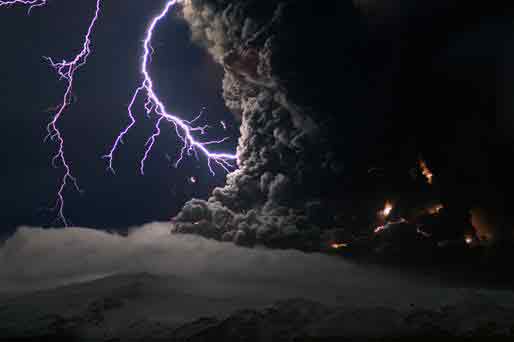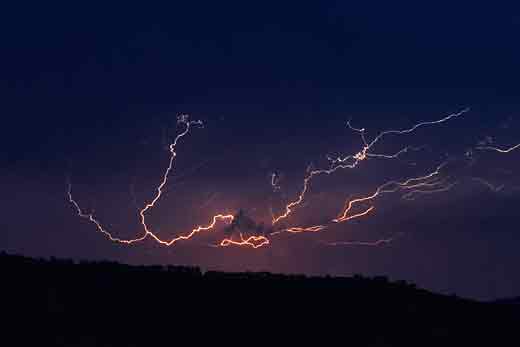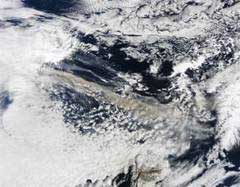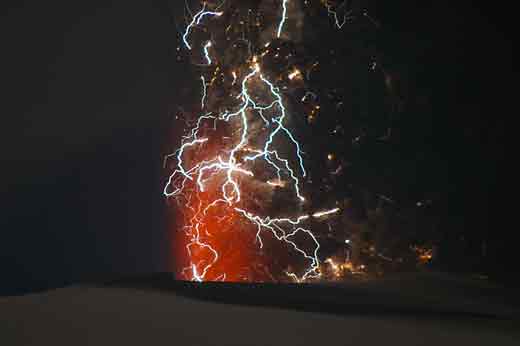Seeing Lightning in the Ash
"Nothing is rich but the inexhaustible wealth of nature. She shows us only surfaces, but she is a million fathoms deep." –Ralph Waldo Emerson
Nature can be calm and beautiful, but also violent and mysterious. The eruption of the Eyjafjallajökull volcano in Iceland is a powerful illustration of this. Pictures of the infamous ash cloud that grounded air travel made the front page of newspapers around the world, and are awe-inspiring by their sheer size alone.
At first glance, some pictures suggest that the ash cloud is like a fluffy haze floating lazily in the wind.
However, a deeper look shows that they are far from lazy. The small bits of rock, minerals, and volcanic glass that make up the ash were spewed at the speed of sound and up to 750 tons per second during the height of the activity. As these bits were expelled into the air, they violently collided with one another, leading to a buildup of charge and intense lightning displays.

Ash and lightning above an Eyjafjallajökull volcano
Credit & Copyright: Marco Fulle (Stromboli Online )
Although lightning is usually associated with thunderstorms, it has been observed in dust storms, large forest fires, and even major snowstorms.
Lightning results from a build of up electrical charge in the atmosphere. For reasons that scientists are still determining (see links below), areas of different charge build up within clouds during a thunderstorm. Some areas become negatively charged and some positively charged. Opposite charges attract, and so there is a force pulling the charges toward one another. But, electricity doesn’t travel very well through air, so this keeps the two areas separated.
A lightning strike occurs when enough charge builds up to overcome the resistance from the air and there is a sudden discharge of electricity. Lightning can occur between a cloud and the ground, between two clouds, and even within the same cloud.

Cloud to cloud lightning strike, March 2007, Swifts Creek
Photo by Fir0002/Flagstaffotos
GNU Free Documentation License

NASA's Terra satellite flew over the [Eyjafjallajokull] volcano at 11:35 UTC (7:35 a.m. EDT) on April 15, 2010, and the Moderate Resolution Imaging Spectroradiometer, or MODIS instrument aboard Terra captured a visible image of the ash plume from Eyjafjallajokull Volcano.
Credit: NASA MODIS Rapid Response Team
Similarly, in the ash cloud produced by a volcano, regions of opposite charges develop. Scientists are still investigating this process, but it likely has to do with collisions between ash particles. Collisions between particles tend to leave smaller particles with an overall negative charge and larger ones with an overall positive charge. Since the particles in an ash cloud collide over and over, this could lead to large build-ups of charge over time. When the charge is strong enough to overcome the resistance from the air, there is a sudden discharge of electricity, just like in a thunderstorm.
Lighting isn’t just an Earth-based phenomenon; scientists have also seen it on Mars! In June 2009, researchers from the University of Michigan detected a series of lightning strikes on Mars that were caused by a big dust storm. The implications of the presence of lightning on Mars remain to be seen, but it raises some interesting questions about how to design equipment headed to Mars and whether lightning might affect the possibility of life on Mars. Stay tuned!
For more information
Lightning Basics, NOAA National Severe Storms Laboratory
More from Eyjafjallajokull, The Boston Globe















